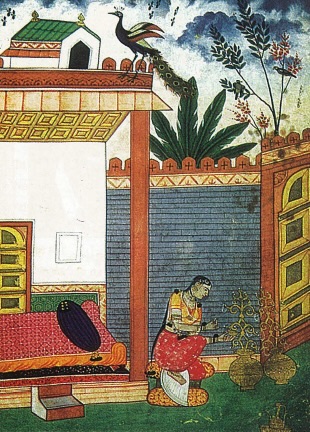India’s raga is on a roll, and musicians, musicologists and connoisseurs all have reason to celebrate. The raga is the core of the Indian classical music system. It has always seemed esoteric, unapproachable, even intimidating–until now. Nimbus Records has turned the tables. The Raga Guide: A Survey of 74 Hindustani Ragas (us$47.92, 196-page book and four CDs, Nimbus, UK) now makes it easier to understand the soul of classical Hindustani music.
The Raga Guide begins by attempting to explain what has always been elusive. As to the question, “What is a raga?,” it says, “Virtually every writer on Indian music has struggled with this fundamental question.” The guide ventures, “A raga can be regarded as a tonal framework for composition and improvisation; a dynamic musical entity with a unique form, embodying a unique musical idea.” A raga is not merely a scale (as in Western music), or a tune or song. A raga is built upon a scale and contains a tune, but it encompasses and implies much more.
Not entirely analytical, Raga Guide appeals to both sides of the brain, and to the heart as well. For listeners, it includes 314 minutes (almost five and a half hours!) of original recordings of India’s renowned performers: Hariprasad Chaurasia on flute; Buddhadev DasGupta on sarod and Shruti Sadolikar-Katkar and Vidhyadhar Vyas on vocals. The music is reason enough to buy the package. In order to fit 74 ragas on just four CDs, the compositions are kept unusually short. This sets the Raga Guide recordings apart from most Indian classical disks, which contain only one raga that is developed for an hour or more.
Raga pandits may scoff, grousing that it’s impossible to convey a raga in such a short span, but editor Joep Bor offers, “These raga sketches have their origin in the 78rpm discs which were recorded during the first half of this century. In these recordings, great vocalists and instrumentalists were capable of bringing out the essence of the ragas in just a few minutes. Like their predecessors, the artists recorded for this project have been able to create little raga jewels, masterpieces in which they portray each raga in three to six minutes.”
Raga Guide is a visual trove as well. The book contains 40 well-printed full-color Indian paintings from the Rajasthani tradition known as Ragamala. Each plate is an artist’s portrayal of a raga based upon the Sanskrit verse that describes it. An English translation of each verse is included.
The Rotterdam Conservatory of Music first approached the now late Dilip Chandra Vedi in 1984. Vedi painstakingly composed the melodic outlines that are the core of the Raga Guide. Bor states, “Vedi’s learned and poignant conception of ragas forms the foundation for the explanations in this guide.” Raga Guide is dedicated to Vedi, and we are indebted to him, and to the musicians, academicians and recording technicians who gave us this excellent raga exposition.
Allegro Corporation,14134 N.E. Airport Way, Portland, Oregon 97230 USA. tel: 503.257.8480; fax: 503.257.9061. www.allegro-music.com


